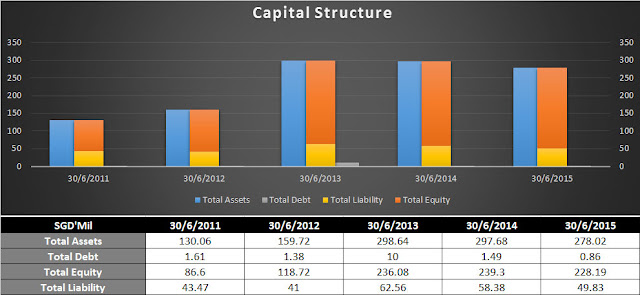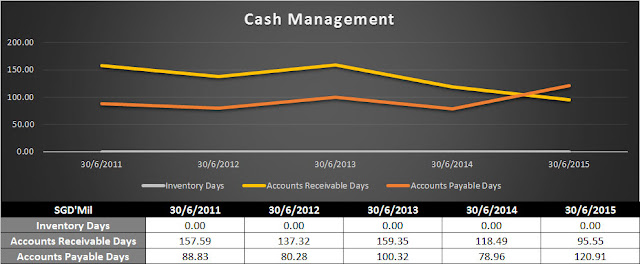In a highly developed nation like Singapore, it is not enough to rely on active income alone to retire comfortably, simply because the cost of living here is too high.
Our government actively encourages us to manage our own finances, and even launched safe investment products (SGS Bonds) that non-financial savvy or risk adverse folks can utilise to earn slightly higher interest rates compared to bank saving accounts.
Although we have our Central Provident Fund (CPF), which pays up to 5% interest on our savings, the money is locked away until our state-dictated retirement age.
So for those seeking higher returns, they would need to invest in riskier products such as the stock market, real estate, commodities, derivatives etc. Followers of the market would sigh at the dismal performance of these investment vehicles, which were lackluster for a period of time now.
This gave rise to crowdfunding platforms where high returns were dangled to attract funds. The success stories where funds were oversubscribed multiple times, created a hype and resulted in many people lowering their guards when it comes to protecting their capital from risks.
The general view is that crowdfunding platforms had them covered in terms of default risks, by only selecting those borrowers that are unlikely to default. This is far from the truth and investors should still conduct their own due diligence on the borrowers, regardless of what the crowdfunding platform says. They are ultimately the middlemen who stands to gain from a fully subscribed funding project.
Nevertheless, legitimate channels of crowdfunding, that are genuinely serving as the middlemen between honest business owners and eager investors, is a good evolution of our sophisticated capital market where traditional money lenders can no longer serve all needs.
Avoiding Investment Scams
Amidst the heightened awareness to invest and to plan for our retirement, many has inadvertently fell prey to unscrupulous individuals or organisations who fed upon the ignorance and greed of the masses.
Hence, I would like to share a simple way to identify whether an investment scheme that you have come across is a scam. I have learnt this from someone whom I am fortunate enough to be acquainted with, and who is now my most trusted financial adviser Mr William Cai.
When it comes to the subject of money, there is no such thing as being too careful. True that you might miss out on opportunities because you just wanted to be extra careful, but it beats losing everything you have got, just because you were careless or have no idea what you are doing.
Bear this in mind, in a legitimate investment scheme where someone else will be managing your money on your behalf, your money should only be placed in a Trust Account.
According to Investopedia, a Trust account is an account that is managed by one party for the benefit of another. It is sometimes called an account held in trust, and the trust relationship can be either explicit or implied. It is usually administered by a bank and the account name would state that it is a Trust Account.
The fund manager that you have appointed simply gives instruction to manage the funds on your behalf without being able to withdraw or touch the money at all. That is the minimum safeguard that you must have and you will not have the risk of someone sweeping your money away without leaving any traces.
Rule 1: If you are asked to transfer money or write a cheque to any account other than a trust account, run for the exit, unless you trust the person who asked for the transfer with your life.
My Own Advise
Never succumb yourself to the time pressure or "the fear of loss". If you think that you are being pressured to make a quick decision because the "opportunity" is now or never, ask yourself the following questions:
1. Have I fully understood what this investment is about?
2. Do I know how the returns are generated?
3. Does the rate of return make sense to me?
4. Do I understand the risk of the investment? (Under what circumstances will this investment fail?)
5. Do I know the motive of the person recommending the investment to me?
6. Is his interest aligned to mine? (What does he stand to lose when my investment fails?)
7. Have I seek a second opinion from another qualified individual?
8. Can I afford to lose this money?
If any of your answers to the above question is "No", then you should not invest and should walk away. There will always be another opportunity. Do your homework properly and not follow your emotions. It is not worth taking risks that you are not even aware you are taking.
5 Laws of Gold
Here are the 5 Laws of Gold from the book: The Richest Man in Babylon
- Gold cometh gladly and in increasing quantity to any man who will put by not less than one-tenth of his earnings to create an estate for his future and that of his family.
- Gold laboreth diligently and contentedly for the wise owner who finds for it profitable employment, multiplying even as the flocks of the field.
- Gold clingeth to the protection of the cautious owner who invests it under the advice of men wise in its handling.
- Gold slippeth away from the man who invests it in businesses or purposes with which he is not familiar or which are not approved by those skilled in its keep.
- Gold flees the man who would force it to impossible earnings or who followeth the alluring advice of tricksters and schemers or who trusts it to his own inexperience and romantic desires in investment.
Age old wisdom stands the test of time, to remain relevant even in our sophisticated society.
Disclaimer
This publication is for general reading only. The information and materials contained on this web site are subject to change without notice, are provided for general information only and should not be used as a basis for making investment decisions. It does not form part of any offer or recommendation, or have any regard to the investment objectives, financial situation or needs of any specific person. Before committing to an investment, please seek advice from a financial or other professional adviser regarding the suitability of the product for you and read the relevant product offer documents. I am not liability and will not be liable for any loss or damage arising directly or indirectly (including special, incidental or consequential loss or damage) from your use of this web site, howsoever arising, including any loss, damage or expense arising from, but not limited to, any defect, error, imperfection, fault, omission, mistake or inaccuracy with this web site, its contents or associated services, or due to any unavailability of the web site or any part thereof or any contents or associated services.

















